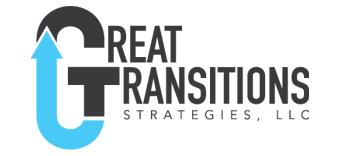“No way I was going to say something after the boss gave her opinion to start the meeting. But, I will tell you, her solution was off the mark.”
“I am thankful that Julie pushed back, it made it easier for everyone to speak up.”
“I am so frustrated with this team. Once Bob gets going in a direction, anyone challenging his approach is ostracized. Hence, nobody challenges him and we are ineffective.”
Is peer or superior pressure so powerful that professionals, who may be experts, fail to speak up?
It sure is and science proves it.
We have lost spacecraft, aircraft, injured and killed individuals because no one spoke up. Those are the big events. Small events create nonproductive and toxic work cultures. Think of a time when you did not speak up and knew you should have?
Let’s add some psychology for you to consider. Specifically, the propensity to conform or not conform, follow directions from authority figures and assume responsibility when not specifically directed.
The classic study conducted by psychologist Solomon Asch on conformity demonstrated the propensity to conform. He used a simple test comparing the length of lines. The group consisted of all actors with one test subject. Actors unanimously gave wrong answers to test their influence on the subject.
With no pressure to conform, other than the public answers of other participants, 75% of the participants confirmed with a group, agreeing to a clearly wrong answer at least once. When asked multiple times 37% still gave the wrong answer. The same group when answering privately gave the wrong answer 1% of the time.
What about if ONE person in a group gave the correct answer, challenging the status quo? In a variation of the experiment when one person did not conform with the group, correct answers increased by over 60%.
How easy is it for one person to dissent in your organization?
The Milgram study is another famous experiment where individuals were tested on their propensity to follow directions from an authority figure. It was shown that individuals would administer a shock, potentially harming another person, for a wrong answer when under the direction of an authority figure.
How well does the culture in your organization support individuals challenging authority?
The final example is the Bystander Effect. Individuals in a crowd become non-acting bystanders because they assume another individual will take responsibility and act. This is also referred to as Diffusion of Responsibility. In an organization this is non-action. In CPR training we are taught to direct a specific person to call 911; “You call 911” rather than “someone call 911” which has been proven to be ineffective.
Does the culture in your organization allow individuals to be bystanders?
My take-aways for leaders:
- The pressure to conform is real and individuals conform when they do not want to
- Go along to get along
- One non-conformist has a significant impact moving others to be non-conformists
- I am glad she spoke up, I am not alone, I have an ally
- Statements & direction from those in authority have real power
- I am following orders and doing what the boss wants
- Being in a group allows individuals to avoid taking responsibility
- Someone else more capable than me will take responsibility for that
The three psychological phenomena are well-documented behaviors of humans and easily become part of organizational culture. How have they crept into your organization? I am sure you can readily share examples.
Consider the power of ONE to combat the above maladies. The power of you as the leader and the power of any ONE individual on your team.
As the leader of your organization considers how often you:
- Speak first to make your opinions known to the group
- Encourage team members to debate and disagree with you
- Allow high performers or assertive team members to dominate meetings
- Allow individuals to hide in the organization and defer responsibility
Consider the actions you could take to:
- Allow any ONE to raise disagreements to leadership
- Ensure any ONE feels comfortable to challenge dominate opinions
- Develop a mindset that every ONE on the team seeks responsibility
What would be the impact on your organization’s culture if you embraced the power of every ONE?





